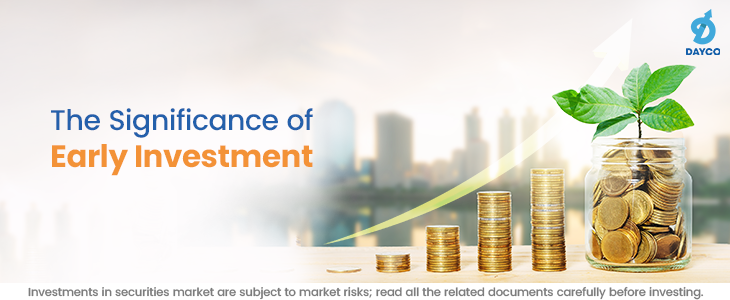According to Warren Buffet, “Money is not everything in life. Make sure you have made enough money before you say that.”
Young people have so many plans for the future. A luxurious home, fancy car, iPhone 15 pro max, destination marriage, and many others. But, how many of them seriously think about retirement? How many seriously think about funding to fulfill their dreams of luxurious homes, cars, etc.? In reality, we face many issues like increasing costs due to inflation, health issues, and loan EMIs which may deviate us from our dreams.
The magnitude of the financial goals we set for ourselves can be so daunting that we might postpone going towards that goal! For my dream house, I may have to make a down payment of 60 lakhs, for my child’s education, I have to arrange for a minimum of 70 lakhs, and so on.
A significant increase in life expectancy has made retirement planning a must do for all of us. If we have to live 20 years more after retirement at 60, we need to build our retirement corpus in such a way that not only takes care of rising inflation but also takes care of geriatric diseases and the cost involved.
However, if you have the discipline to invest consistently over a significantly long period of time, the power of compounding will be your best friend in overcoming these challenges.
Start investing as early as possible. It establishes good savings habits and your investment will get more time to grow with the help of compound interest.
The advantage of time in the market – Despite short-term fluctuations, markets have historically grown over extended periods. So, the earlier you invest, the more you benefit from compounding.
The higher risk tolerance – At a young age, you may be more tolerant of risk. You will have more time to recover the market volatility than the late starters.
Here’s a Practical Example of How Investing Early Gives You an Edge Over The Bouncers Life Throws At You
Tom and Jerry are two childhood friends. The bond among them is very strong despite being different in nature. While Tom is a bohemian type without any care for the future, Jerry is always very cautious about his future.
At the age of 25, both of them started their professional life. While Jerry decided to start investing Rs.10,000/- every month towards his retirement corpus and advised the same to Tom, Tom just ignored the advice by saying it was too early to think about retirement. Maybe, he will give it a thought when he reaches the age of 40 years.
Reality check:
When both of them reach 40:
Jerry started investing Rs. 10,000/- per month at the age of 25 years.
The total investment amount of Jerry at the age of 40 years: 10,000 x 12 x 15= 18 Lakhs.
The total corpus stands at = 41,79,242 (@ 10% p.a returns on investments).
** Jerry decided to stop further investment and to keep the investment till his retirement at 60**
Now, at the age of 40, Tom decided to start investing Rs. 10,000/- per month till his retirement at 60.
At the age of 40, Tom’s investment amount is zero and his retirement corpus is also zero.
When both of them reach 60.
Jerry’s investment amount: 10,000 x 12 x15 = 18,00,000 (as he stopped investing at the age of 40).
Jerry’s retirement corpus = 3,06,25,797 (@ 10% p.a returns on investments).
Tom’s total investment amount: 10,000 x 12 x 20 = 24,00,000.
Tom’s retirement corpus at the age of 60 = 76,56,969 (@ 10% p.a returns on investments).
In both cases, they have invested Rs. 10,000/- per month. Jerry for 15 years and Tom for 20 years. But, despite stopping further investment at 40, Jerry’s retirement corpus is 3,06,25,797 whereas, Tom, who has invested for 20 years, and amount of investment is more than Jerry’s, Tom’s retirement corpus is only 76,56,969.
The reason behind this difference of retirement corpus is the power of compounding over the long term and that is the real advantage of investing early.
~Suman Dan
















